Home>Garden Essentials>Garden Storage>How To Build A Wardrobe For Men
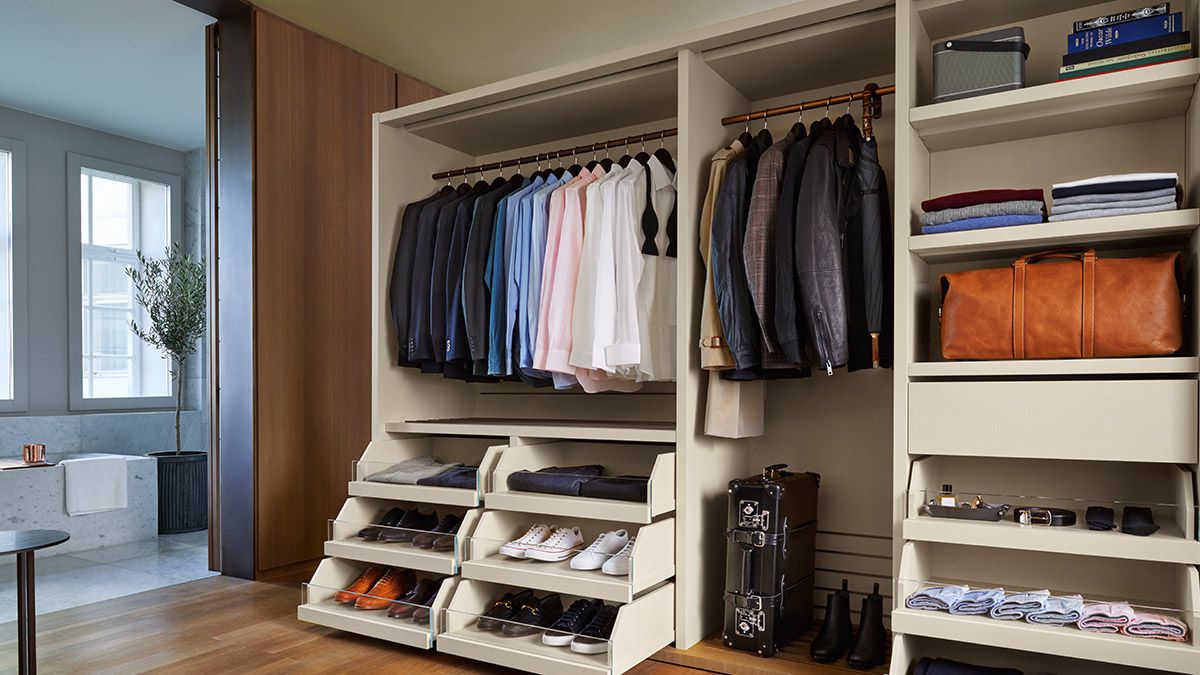

Garden Storage
How To Build A Wardrobe For Men
Modified: January 5, 2024
Learn how to build a stylish wardrobe for men with efficient storage solutions. Discover tips and tricks to maximize your closet space and organize your clothing collection.
(Many of the links in this article redirect to a specific reviewed product. Your purchase of these products through affiliate links helps to generate commission for Storables.com, at no extra cost. Learn more)
Introduction
Welcome to the world of men’s fashion and the art of building a wardrobe that suits your personal style. Having a well-curated wardrobe not only boosts your confidence but also helps you make a lasting impression in any setting. However, building a wardrobe can be a daunting task, especially with the multitude of clothing options available.
In this article, we will guide you through the process of building a wardrobe that reflects your individuality, caters to your lifestyle, and ensures you are always dressed your best. From understanding your personal style to selecting the right fabrics and colors, we will cover every aspect of building a versatile and stylish wardrobe.
Your personal style is a distinctive expression of who you are and how you want to present yourself to the world. It’s a reflection of your taste, preferences, and personality. Before diving into building your wardrobe, take some time to understand and define your personal style. Are you a minimalist who prefers a clean and understated look, or do you lean towards a more bold and flamboyant style? Do you prefer classic and timeless pieces, or are you drawn to trendy and fashion-forward styles? Understanding your personal style will serve as a foundation for curating a wardrobe that truly represents you.
A wardrobe assessment is the next important step in building your wardrobe. Take a critical look at your existing collection of clothing and evaluate what works and what doesn’t. Identify any gaps or missing pieces that would enhance your wardrobe’s versatility. Consider your lifestyle and the occasions you typically dress for. Are you mainly in a formal corporate environment, or do you have a more casual and relaxed dress code? Do you attend social events frequently, or are you more focused on outdoor activities? These factors will help you determine the types of clothing items that should be prioritized in your wardrobe.
Now, let’s delve into the essential clothing items that form the foundation of a well-rounded wardrobe. These items are versatile, timeless, and can be mixed and matched to create a variety of stylish outfits. Think of them as the building blocks that will serve as a solid base for your wardrobe.
Key Takeaways:
- Understanding your personal style and assessing your wardrobe needs are crucial steps in building a versatile and stylish wardrobe that truly represents you. Embrace the journey and enjoy the confidence that comes with a well-curated wardrobe.
- Selecting the right fabrics and colors, ensuring proper fit and tailoring, and embracing the art of accessorizing are essential elements in creating cohesive and stylish outfits. Regular maintenance and organization of your wardrobe are key to keeping it in prime condition for years to come.
Read more: How To Build A Men’s Capsule Wardrobe
Understanding Your Personal Style
Understanding and defining your personal style is crucial when building a wardrobe. Your personal style is not just about following trends; it is a reflection of your personality, lifestyle, and taste. Identifying and embracing your unique style will make it easier to curate a wardrobe that truly represents you. Here are a few steps to help you understand and define your personal style:
1. Explore Your Preferences: Start by exploring your preferences in terms of fashion. Look for inspiration in magazines, fashion blogs, and social media platforms like Instagram and Pinterest. Take note of the outfits, colors, and patterns that catch your eye and resonate with your taste. Pay attention to the styles of clothes you feel most comfortable in and those that make you feel confident.
2. Identify Your Style Icons: Think about people whose style you admire and consider them as your style icons. They could be celebrities, fashion influencers, or even friends or family members whose fashion choices you admire. Studying their style can give you insights into what resonates with you and guide you in finding your own unique style.
3. Evaluate Your Lifestyle: Your lifestyle plays a significant role in shaping your personal style. Consider your daily activities, work environment, and social engagements. Are you in a formal or casual setting most of the time? Are you on the go or do you have a more relaxed lifestyle? Understanding your lifestyle will help you select clothing that is both fashionable and practical.
4. Define Your Style Keywords: Think of a few keywords that encapsulate your personal style. Are you classic, minimalist, bohemian, preppy, or edgy? Defining your style with keywords will give you a clear sense of direction when selecting clothing items for your wardrobe.
5. Experiment and Evolve: Building a personal style is an ongoing process. It’s important to be open to experimenting with different styles and trends to see what works best for you. Your style will also evolve over time as you gain confidence and experience. Embrace the journey and allow your personal style to grow and adapt along with you.
Remember, your personal style should be a reflection of your authentic self. It should make you feel comfortable, confident, and proud of your appearance. Understanding your personal style will serve as a foundation for building a wardrobe that truly represents you and ensures you always look and feel your best.
Assessing Your Wardrobe Needs
Assessing your wardrobe needs is a critical step in building a functional and versatile wardrobe. It involves evaluating your current collection of clothing and identifying any gaps or missing pieces that would enhance your wardrobe’s versatility. Here are some steps to help you assess your wardrobe needs:
1. Clothing Inventory: Start by taking stock of all the clothing items you currently own. This includes everything from tops and bottoms to outerwear, shoes, and accessories. Take the time to try on each item and assess its fit, condition, and relevance to your personal style. Consider whether each item still aligns with your current fashion preferences and if it is suitable for your lifestyle.
2. Identify Missing Pieces: While assessing your wardrobe, pay attention to any gaps or missing pieces that would enhance your outfit options. For example, if you have plenty of casual t-shirts but lack a few versatile button-up shirts, that would be a gap to fill. Look for categories such as formal wear, casual wear, workout attire, and specific occasions to ensure you have the necessary pieces for different scenarios.
3. Consider Seasonal Changes: Depending on where you live, your wardrobe needs may vary throughout the year. Consider the seasonal changes and evaluate if you have appropriate clothing for each season. Make note of any seasonal items that need to be added or replaced. This might include heavier coats or sweaters for winter, lightweight and breathable fabrics for summer, or layering pieces for transitional seasons.
4. Budget and Prioritize: Building a wardrobe can be a financial investment, so it’s important to establish a budget and prioritize your purchases. Focus on acquiring essential pieces that will provide the most versatility and longevity in your wardrobe. Start with the basics and gradually add more specialized and trend-focused items.
5. Consider Versatility: Aim for versatility when assessing your wardrobe needs. Look for items that can be mixed and matched with multiple outfits. Neutral colors and classic silhouettes tend to be more versatile and can be easily styled in various ways. This approach will allow you to create a wider range of outfits without needing an extensive wardrobe.
6. Quality and Durability: When evaluating your wardrobe needs, place importance on quality and durability. Invest in well-made garments that will stand the test of time, both in terms of durability and style. Quality clothing often lasts longer, saving you money in the long run.
Assessing your wardrobe needs is an ongoing process. As your style evolves and your needs change, periodically evaluate your wardrobe to ensure it remains functional and aligned with your personal style. By identifying any gaps or missing pieces, you can strategically build a wardrobe that suits your lifestyle and allows you to effortlessly put together stylish and cohesive outfits.
Essential Clothing Items for a Basic Wardrobe
Building a basic wardrobe is all about investing in versatile clothing items that form the foundation of your style. These essential pieces can be mixed and matched to create a variety of outfits for different occasions. Here are some key clothing items to include in your basic wardrobe:
- T-shirts: Start with a selection of quality t-shirts in neutral colors like black, white, and gray. These can be worn on their own or layered under shirts, sweaters, or jackets.
- Button-up Shirts: A few well-fitted button-up shirts are essential for a basic wardrobe. Opt for classic colors like white, blue, and striped patterns that can be dressed up or down for various occasions.
- Polo Shirts: Polo shirts are a versatile option that can be dressed up with chinos or dressed down with jeans or shorts. Choose a few in different colors to add variety to your wardrobe.
- Jeans: Invest in a good pair of jeans that fit you well and flatter your body shape. Classic denim colors like indigo or black are versatile options that can be dressed up with a blazer or dressed down with a t-shirt.
- Trousers/Chinos: A pair of well-fitted trousers or chinos in a neutral color like navy or khaki is a must for a basic wardrobe. They can be worn with button-up shirts for a more formal look or paired with t-shirts for a smart-casual vibe.
- Sweaters: Have a few sweaters in different styles like crew neck, V-neck, or cardigan. Opt for neutral colors and versatile fabrics like merino wool or cotton, so they can be layered or worn on their own.
- Blazers/Sport Coats: A tailored blazer or sport coat instantly elevates any outfit. Choose a versatile color like navy or gray, and make sure it fits well to enhance your overall appearance.
- Outerwear: Depending on your climate, invest in a few outerwear options like a lightweight jacket, a trench coat, or a versatile bomber jacket for added style and practicality.
- Shoes: A basic wardrobe should include a few pairs of versatile shoes, such as classic leather dress shoes, casual sneakers, and versatile boots. Ensure that they are comfortable and suited to your personal style.
- Accessories: Don’t forget to include accessories like belts, socks, and ties or pocket squares to add a finishing touch to your outfits. These small details can make a big difference in your overall look.
These essential clothing items serve as the building blocks of a basic wardrobe. By investing in high-quality pieces that fit well and suit your personal style, you can create a wide range of outfits for different occasions and seasons. Remember, building a wardrobe is a personal journey, so adapt these essentials to your own preferences and lifestyle.
Building a Formal Attire Collection
A well-rounded wardrobe should include a collection of formal attire for those special occasions that require a more polished and sophisticated look. Whether it’s a black-tie event, a formal business meeting, or a wedding, having the right formal attire is essential. Here are some key pieces to consider when building a formal attire collection:
- Suit: Invest in a well-tailored suit that fits you perfectly. Opt for classic colors like navy, charcoal gray, or black, as they are versatile and timeless. Consider the fabric based on the occasion and climate. A high-quality wool suit is a safe bet for most formal events.
- Dress Shirts: Have a collection of dress shirts in different colors and patterns that complement your suits. Classic colors like white, light blue, and pale pink are always a safe choice. Pay attention to the collar style and fit to ensure a polished look.
- Ties: A collection of ties adds personality and elegance to your formal outfits. Include a range of colors, patterns, and fabric textures to match different suits and occasions. Learn how to tie different knots for versatility.
- Dress Shoes: Complete your formal look with a pair of well-polished dress shoes. Opt for classic styles like oxfords or brogues in black or brown leather. Make sure they are comfortable and match your suit in terms of formality and color.
- Formal Accessories: Don’t forget the finishing touches. Invest in formal accessories like a quality dress watch, pocket square, cufflinks, and a belt that matches your shoes. These details enhance the overall look and show attention to detail.
- Outerwear: Depending on the weather, include a formal coat or overcoat that complements your formal attire. A tailored topcoat or a classic trench coat are timeless options that add sophistication to your formal look.
When building your formal attire collection, fit is essential. Tailoring is key to achieving a polished and professional look. Find a reputable tailor who can adjust your suits and shirts to fit you perfectly. Pay attention to the length of sleeves, trouser legs, and jacket shoulders to ensure a sharp appearance.
Remember, a formal attire collection should be versatile enough to accommodate various formal occasions. Mix and match suits, shirts, and accessories to create different looks. Additionally, periodically review your collection to ensure it remains up-to-date with current fashion trends and reflects your evolving personal style.
Building a formal attire collection takes time and investment, but the versatility and sophistication it adds to your wardrobe make it well worth it. With the right pieces, you’ll always be prepared to make a lasting impression at any formal event.
Read more: How To Build A Wardrobe Mens
Creating a Casual and Stylish Wardrobe
A casual and stylish wardrobe is essential for everyday wear and more relaxed social events. It’s a collection of clothing that allows you to express your personal style while feeling comfortable and confident. Here are some key tips and considerations for creating a casual and stylish wardrobe:
- T-shirts and Polos: Start with a variety of well-fitting t-shirts and polos in different colors and patterns. These versatile tops can be paired with jeans, chinos, or shorts for a casual and laid-back look.
- Casual Shirts: Include a selection of casual shirts such as button-ups, flannels, or denim shirts. Opt for different styles and patterns to add variety to your wardrobe. These shirts can be worn on their own or layered over t-shirts for a more stylish ensemble.
- Jeans and Chinos: Invest in a few pairs of high-quality jeans and chinos. Opt for different washes and colors to create versatile outfits. Make sure they fit well and are comfortable for everyday wear.
- Shorts: Depending on the climate, include a few pairs of shorts in different lengths and styles. Choose breathable fabrics and versatile colors for a casual and comfortable summer look.
- Casual Shoes: Complete your casual wardrobe with a variety of footwear options. Sneakers, loafers, boat shoes, and casual boots are all great choices that pair well with jeans, chinos, and shorts. Choose styles that reflect your personal taste and match your overall aesthetic.
- Layering Pieces: Include layering pieces like lightweight sweaters, hoodies, or cardigans for added style and warmth during cooler months. These items can be layered over shirts or t-shirts for a more put-together look.
- Accessories: Don’t forget to accessorize your casual outfits. Add a touch of personality with hats, sunglasses, scarves, or a stylish backpack. These accessories can elevate your overall look and showcase your personal style.
When building a casual and stylish wardrobe, it’s important to consider your lifestyle and the activities you engage in. If you are involved in outdoor activities, consider investing in performance fabrics and athleisure wear that combine comfort and style. If you have a more urban lifestyle, focus on streetwear-inspired pieces and trendy styles.
Experiment with different combinations and mix and match your casual clothing items to create unique and stylish outfits. Don’t be afraid to try out new trends or incorporate bold colors and patterns into your wardrobe. Remember, casual wear is an opportunity to express your personal style and showcase your individuality.
Regularly review and update your casual wardrobe to stay current with fashion trends and your changing preferences. Remove items that you no longer wear or that no longer fit your style, and replace them with new pieces that reflect your evolving fashion sense.
Creating a casual and stylish wardrobe is all about finding the right balance between comfort, functionality, and a sense of style. With the right clothing items and a touch of creativity, you can build a wardrobe that makes you look and feel effortlessly cool in any casual setting.
Choosing the Right Fabrics and Colors
When building a wardrobe, choosing the right fabrics and colors is crucial to creating outfits that not only look stylish but also feel comfortable and appropriate for different occasions. Here are some tips to guide you in selecting the right fabrics and colors for your wardrobe:
Choosing the Right Fabrics:
The fabrics you choose play a significant role in the overall comfort, durability, and style of your clothing. Here are some popular fabric choices and their characteristics:
- Cotton: Cotton is a versatile and breathable fabric that is perfect for everyday wear. It comes in various weights and can be used for t-shirts, button-up shirts, and lightweight sweaters. Cotton blends, such as cotton-polyester blends, offer added durability and wrinkle resistance.
- Wool: Wool is a natural fabric known for its warmth and insulation. It is commonly used for suits, trousers, and sweaters. Wool can vary in thickness, with options like lightweight merino wool for layering or heavier wool for outerwear. It offers good breathability and wicks away moisture.
- Denim: Denim is a sturdy cotton fabric known for its durability and iconic use in jeans. It can range from lightweight to heavyweight and comes in different washes and finishes. Denim is a versatile fabric that adds a casual and rugged appeal to your wardrobe.
- Linen: Linen is a lightweight and breathable fabric made from flax fibers. It is ideal for warm weather due to its moisture-wicking properties. Linen shirts, trousers, and suits have a relaxed and breathable feel, making them suitable for casual and semi-formal occasions.
- Synthetic Fabrics: Synthetic fabrics like polyester and nylon offer durability, resistance to wrinkles, and moisture-wicking properties. They are often used in activewear and outdoor clothing. While synthetic fabrics may lack the natural breathability of cotton or wool, they provide performance benefits for specific activities.
Choosing the Right Colors:
Colors play a crucial role in expressing your personal style and creating a cohesive wardrobe. Here are some factors to consider when selecting colors:
- Neutral Colors: Incorporate neutral colors like black, white, gray, navy, and beige into your wardrobe. These colors are versatile and act as a foundation for various outfit combinations. They also serve as a backdrop for bolder colors and patterns.
- Complementary Colors: Complementary colors are colors that are opposite each other on the color wheel, such as blue and orange or red and green. Using complementary colors in your outfits can create a visually pleasing contrast and add interest to your overall look.
- Monochromatic Colors: Creating monochromatic outfits using different shades of the same color can give a sleek and sophisticated look. Experiment with different tones and textures to add depth and dimension to your outfit.
- Accent Colors: Add pops of color to your outfits with accent colors. Choose a few vibrant colors that complement your complexion and personal style. These colors can be incorporated through accessories, shirts, or statement pieces to create focal points.
- Seasonal Colors: Consider seasonal colors to add a touch of freshness and relevance to your wardrobe. Pastels for spring, vibrant hues for summer, earthy tones for fall, and deep jewel tones for winter can help you create outfits that reflect the spirit of each season.
When choosing fabrics and colors, it’s important to consider your personal style, lifestyle, and the occasions you dress for. Opt for fabrics that align with your comfort preferences and the climate you live in. Select colors that bring out your best features and reflect your personality. Remember, building a wardrobe is a personal journey, so choose fabrics and colors that make you feel confident and showcase your unique sense of style.
Read more: How To Build A Wardrobe
Proper Fit and Tailoring Tips
Ensuring proper fit is essential for a polished and stylish look. No matter how high-quality or trendy your clothing may be, if it doesn’t fit well, it won’t flatter your body shape or enhance your overall appearance. Here are some fit and tailoring tips to help you achieve a perfect fit:
Know Your Measurements:
Understanding your body measurements is the first step towards finding clothing that fits you well. Take accurate measurements of your chest, waist, hips, inseam, and sleeve length. This will help you determine your correct size when shopping and ensure a better fit overall.
Consider the Body Shape:
Understanding your body shape is crucial when selecting clothing items. Different styles and cuts suit different body types. For example:
- If you have an athletic build, consider clothing with a slim fit that highlights your physique.
- If you have a broader build or carry extra weight, opt for clothing with a more relaxed fit that skims over your body rather than clinging.
- If you have a taller or shorter stature, consider hemming trousers or sleeves to achieve the proper length.
Pay Attention to Shoulder Fit:
The shoulder area is one of the most important aspects of fit. Ensure that the seams of shirts, jackets, and blazers align with the point where your shoulders naturally end. Ill-fitting shoulders can make the entire garment look off and distort your overall appearance.
Read more: How To Build Built In Wardrobe
Tailor for Proper Length:
Proper length is crucial for both tops and bottoms. Here are some guidelines:
- Shirts: The length of your shirt should be long enough to cover your waistband but not extend past your zipper. The sleeves should end at around the base of your thumb or wrist bone.
- Trousers: The length of your trousers should be tailored to skim the top of your shoe without excess pooling or dragging. For a neat appearance, opt for a slight break or minimal break in the trouser leg.
Get Pants Tailored:
Buying pants with the correct waist size is important, but the fit can often be improved through tailoring. Many pants come with extra fabric in the waist and seat area, allowing a tailor to make adjustments for a better fit. Consider this option if you find that pants fit well in some areas but are slightly off in others.
Take Advantage of Tailoring Services:
Don’t be afraid to take your clothing to a professional tailor for adjustments. A skilled tailor can make alterations to ensure a perfect fit. Common alterations include shortening sleeves, adjusting waistbands, tapering trousers, or taking in or letting out garment seams. Investing in tailoring can elevate your overall appearance and make your clothing look custom-made for you.
Remember, clothing is designed with general measurements in mind, and everyone’s body is unique. Tailoring allows you to customize your clothing to your specific body shape and proportions, enhancing your style and confidence. Take the time to find a reputable tailor and embrace the idea that a proper fit is key to looking your best.
Accessorizing Your Outfits
Accessorizing is the art of adding those finishing touches to your outfits that elevate your style and make a statement. It’s an opportunity to showcase your personality and inject some flair into your everyday looks. Here are some tips to help you accessorize your outfits:
Read more: How To Build A Wardrobe Closet
Choose Quality and Versatile Pieces:
Invest in high-quality accessories that are versatile and can be mixed and matched with multiple outfits. Look for timeless pieces that will withstand changing trends and last for years to come. Quality accessories not only enhance the overall look of your outfits, but they also show attention to detail.
Consider the Occasion:
When accessorizing, consider the occasion and the dress code. For formal events, opt for classic accessories like ties, cufflinks, and dress watches. For casual settings, experiment with hats, scarves, statement belts, or trendy sunglasses. Adapting your accessories to the occasion will help create a cohesive and appropriate look.
Balance and Proportion:
A key aspect of accessorizing is achieving balance and proportion within your outfit. Avoid overwhelming your look with too many accessories. Instead, focus on one or two statement pieces and complement them with more subtle accessories. For example, if you’re wearing a bold statement watch, pair it with simpler bracelets or rings to maintain balance.
Consider Color and Texture:
Accessorizing is an excellent opportunity to introduce pops of color and interesting textures to your outfit. Experiment with colorful pocket squares, patterned socks, or vibrant ties to add personality and visual interest. Be mindful of how colors and textures complement or contrast with your clothing to create a cohesive and stylish look.
Read more: How To Build Capsule Wardrobe
Layer Accessories:
Layering accessories can add depth and dimension to your outfits. For example, layering bracelets or necklaces of varying lengths and textures can create an eye-catching effect. Experiment with different combinations and find what works best for you, ensuring that the layers do not overpower your outfit.
Don’t Forget About Shoes:
Shoes are an essential part of your outfit and can make a significant impact on your overall style. Invest in quality shoes that complement your personal style. Consider different styles, such as dress shoes, sneakers, loafers, or boots, to match various occasions. Clean and well-maintained shoes can elevate even the most casual outfits.
Express Yourself:
Above all, embrace accessories as a means of self-expression. Let your personality shine through your choices. Whether you prefer a minimalist approach or love to experiment with bold and statement pieces, accessorizing allows you to showcase your individuality and create a unique style that is truly yours.
Remember, accessorizing should be fun and creative. Experiment with different accessories and combinations to find what feels right for you. Ultimately, it’s all about adding those personal touches that complete your outfits and make you feel confident and stylish.
Maintaining and Organizing Your Wardrobe
A well-maintained and organized wardrobe not only saves you time when getting dressed but also ensures that your clothing remains in good condition and lasts longer. Here are some tips to help you maintain and organize your wardrobe:
Read more: How To Build Wardrobe Closet
Regularly Declutter:
Start by decluttering your wardrobe and removing items that no longer serve you. This includes clothing that no longer fits, is damaged beyond repair, or is simply not aligned with your current style. Letting go of these items creates more space and makes it easier to organize.
Rotate Seasonal Clothing:
Consider rotating your clothing based on the seasons. Store off-season clothes in storage containers or vacuum-sealed bags to free up space and keep them in good condition. This not only reduces the clutter but also allows you to focus on the clothes that are appropriate for the current season.
Invest in Suitable Storage Solutions:
Invest in storage solutions that fit your space and make it easy to organize your clothes. This could include bins, shelving units, hangers, and shoe racks. Utilize vertical space and maximize the use of drawers and shelves to keep items organized and visible.
Categorize and Sort:
Categorize your clothing by type, such as tops, bottoms, dresses, jackets, and so on. Within each category, sort items by color or occasion. This makes it easier to find specific items and creates a visually appealing display. Consider using dividers or labeling systems for smaller accessories like socks, ties, and belts.
Read more: How To Build Basic Wardrobe
Use Proper Hangers and Fold Clothing Correctly:
Invest in appropriate hangers to preserve the shape of your clothes. Use padded or non-slip hangers for delicate items like silk blouses or dresses. Fold heavier items like sweaters, knits, and jeans to prevent the stretching and distortion that can happen when they hang for extended periods. Avoid overcrowding hangers and drawers to minimize wrinkles and ensure easy access.
Keep Shoes Organized:
Organize your shoes by using shoe racks or clear containers. This not only helps keep them in good condition but also makes it easier to see and access the pairs you want to wear. Consider using shoe inserts or stuffing to maintain shape and absorb moisture.
Regular Maintenance:
Care for your clothing by following the care instructions on the labels. Use appropriate cleaning methods, such as handwashing, machine washing, or dry cleaning, depending on the fabric and garment type. Regularly inspect and mend any loose buttons, loose threads, or minor damages to keep your clothes in good condition.
Rotate and Refresh Your Wardrobe:
Rotating your wardrobe periodically helps prevent excessive wear and allows you to showcase different pieces. As seasons change, assess your wardrobe for any items that need replacing or updating. Consider donating or selling clothes that no longer serve you, as it creates space for new additions and helps reduce waste.
Maintaining and organizing your wardrobe is an ongoing process. Regularly assess and update your system to accommodate your changing lifestyle and fashion preferences. By implementing these tips, you’ll be able to keep your wardrobe neat, accessible, and in prime condition for years to come.
Read more: How To Organize Men’s Closet
Conclusion
Building a wardrobe that reflects your personal style, suits your lifestyle, and ensures you are always dressed your best is an exciting and fulfilling endeavor. By following the steps outlined in this guide, you can curate a wardrobe that is not only stylish but also functional and versatile for a variety of occasions.
Understanding your personal style is the first step in the process. Take the time to explore your preferences, identify style icons, and define your own unique style keywords. This foundation will guide you in selecting the right clothing items that truly represent you.
Assessing your wardrobe needs helps you identify any gaps or missing pieces that would enhance your outfit options. Consider your lifestyle, the occasions you dress for, and the seasonal changes to ensure that your wardrobe is well-rounded and practical.
From essential clothing items for a basic wardrobe to building a formal attire collection and creating a casual and stylish wardrobe, each section of this guide provides insights and recommendations to help you make informed choices. Remember, selecting the right fabrics and colors is key to creating cohesive outfits that not only look great but also feel comfortable and appropriate.
Proper fit and tailoring are essential to ensuring that your clothing flatters your body shape and enhances your overall appearance. Seek out a reliable tailor who can make adjustments as needed to achieve the perfect fit.
Accessorizing your outfits is an opportunity to showcase your personality and add those final touches that elevate your style. Whether it’s through choices of belts, watches, hats, or shoes, accessories bring your outfits to life and allow you to express your individuality.
Lastly, maintaining and organizing your wardrobe is an ongoing process that requires regular assessment and care. Decluttering, rotating seasonal clothing, investing in suitable storage solutions, and following proper maintenance techniques will help keep your wardrobe in top condition and make getting dressed a breeze.
Building a wardrobe takes time, effort, and attention to detail, but by following these steps and infusing your own personal touch, you can create a wardrobe that is a true reflection of who you are. So embrace the journey, experiment with different styles, and enjoy the confidence and style that comes with a well-curated wardrobe.
Frequently Asked Questions about How To Build A Wardrobe For Men
Was this page helpful?
At Storables.com, we guarantee accurate and reliable information. Our content, validated by Expert Board Contributors, is crafted following stringent Editorial Policies. We're committed to providing you with well-researched, expert-backed insights for all your informational needs.

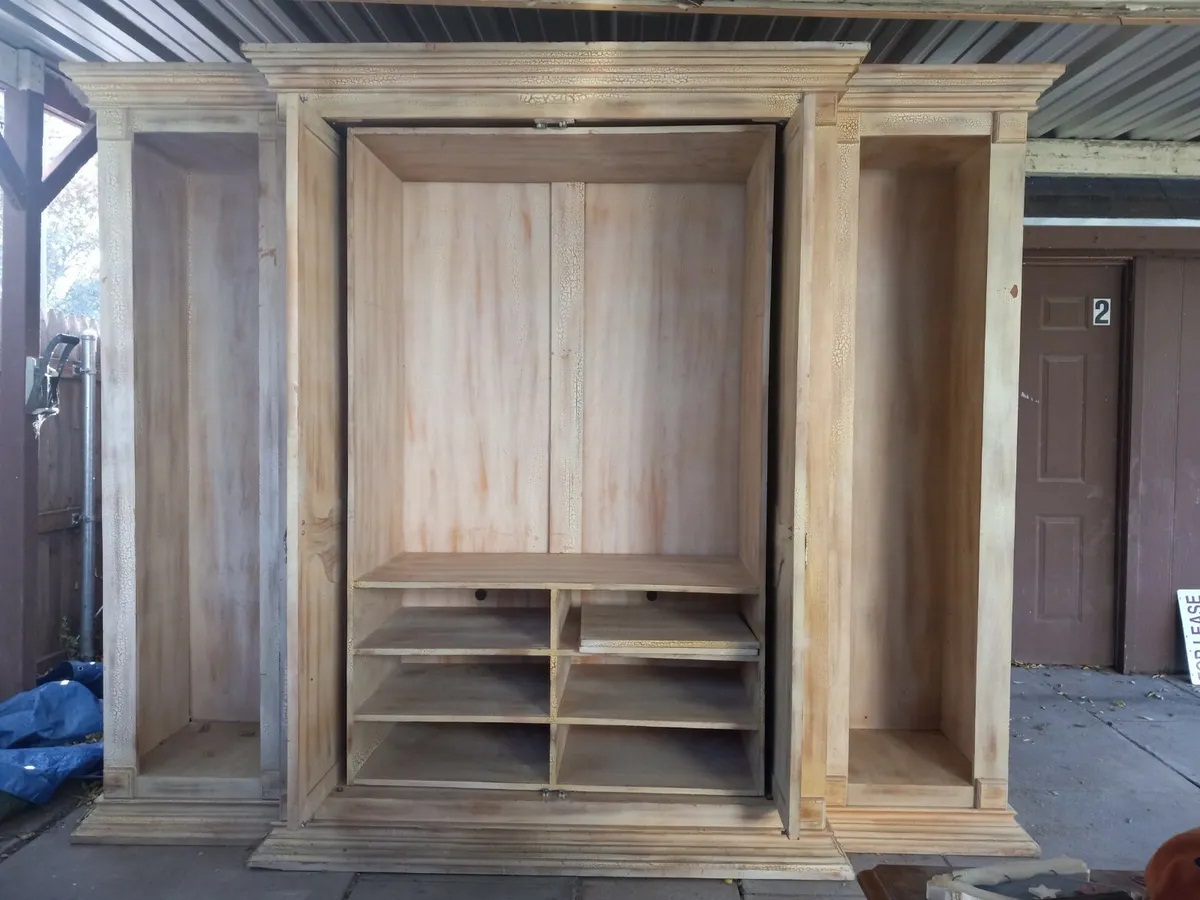
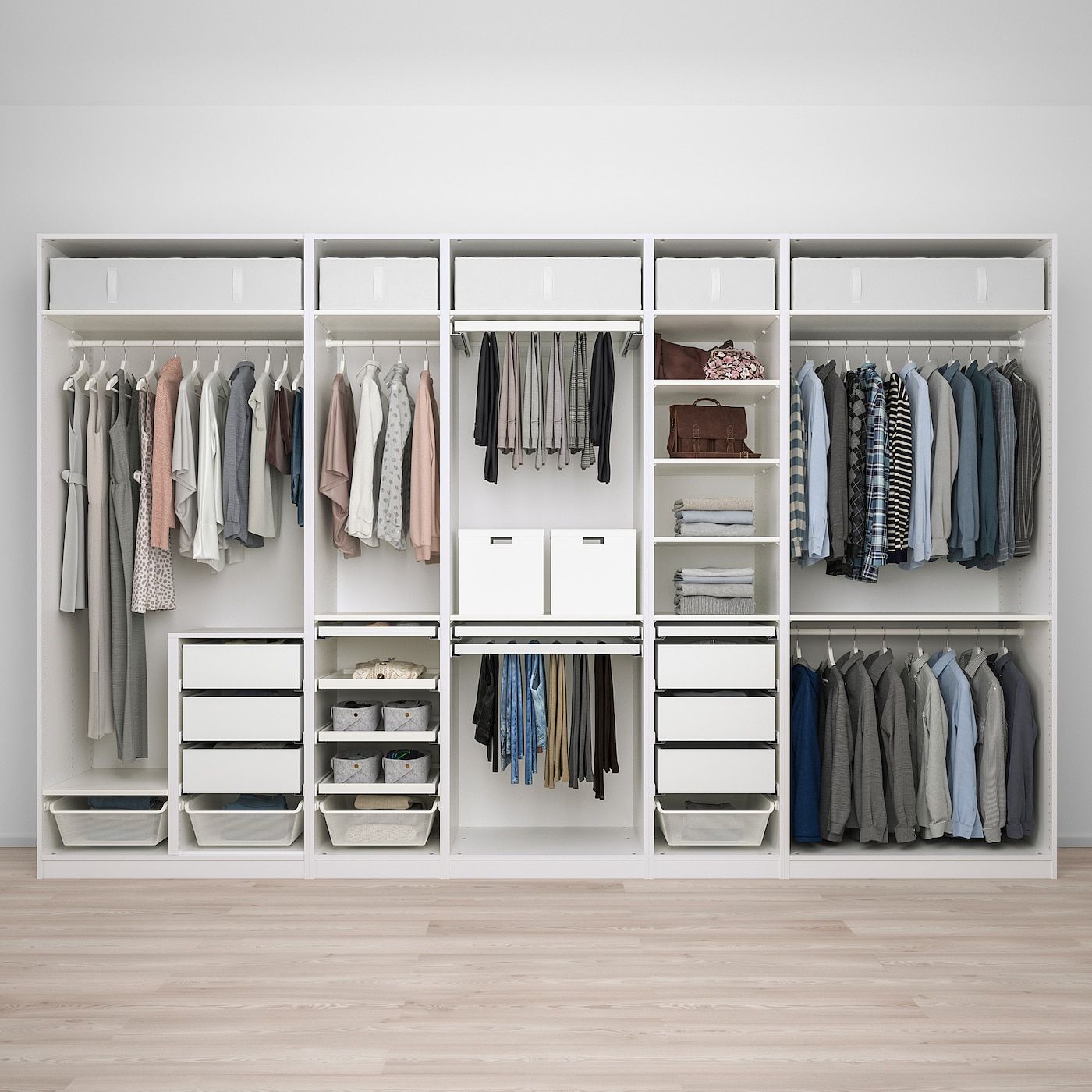
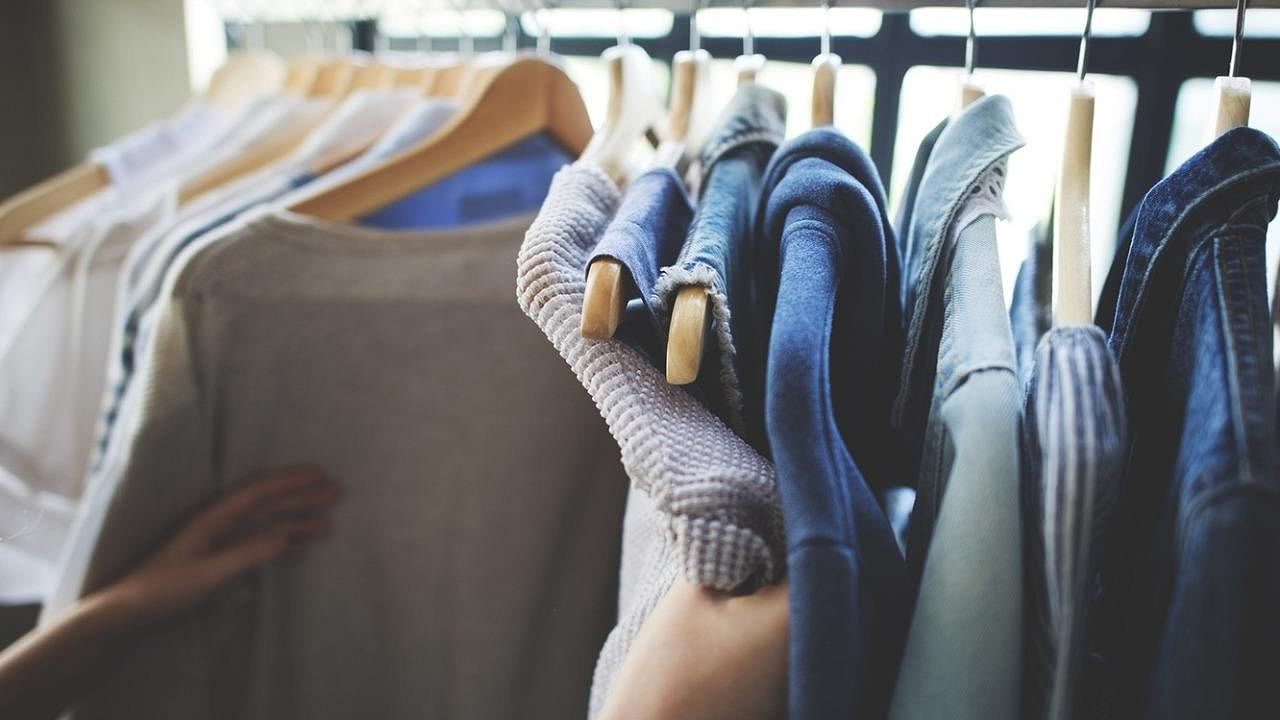
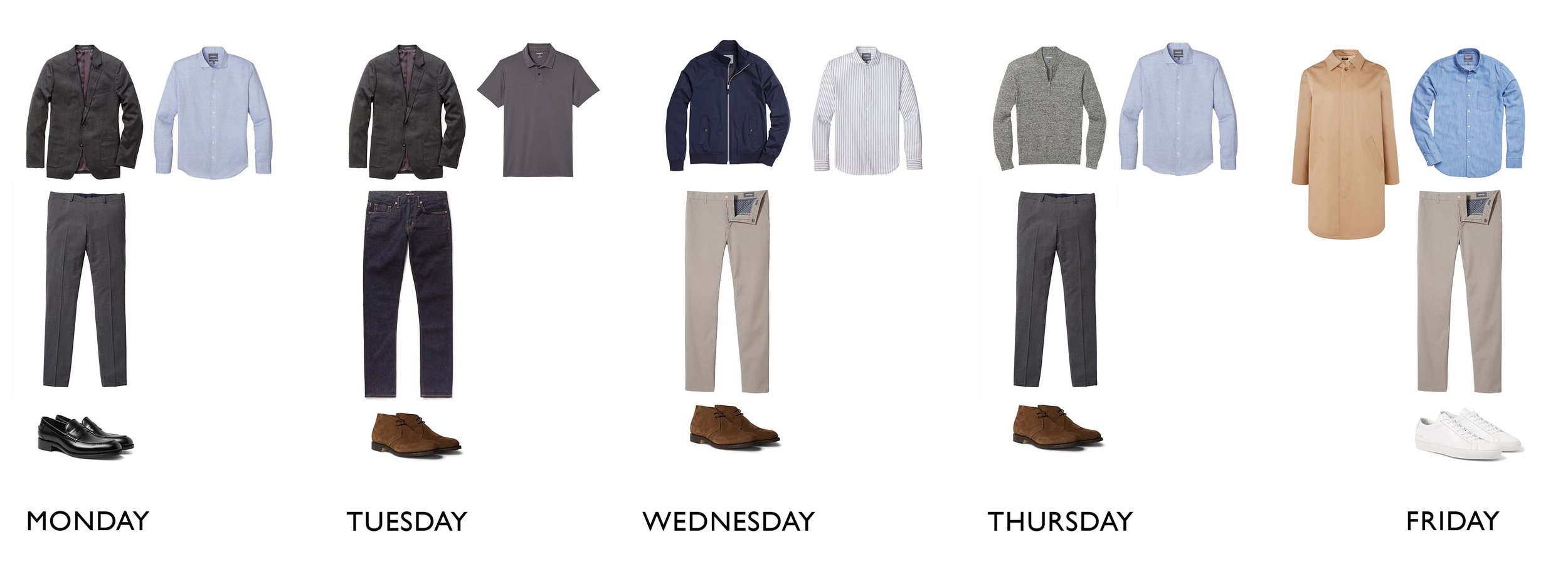
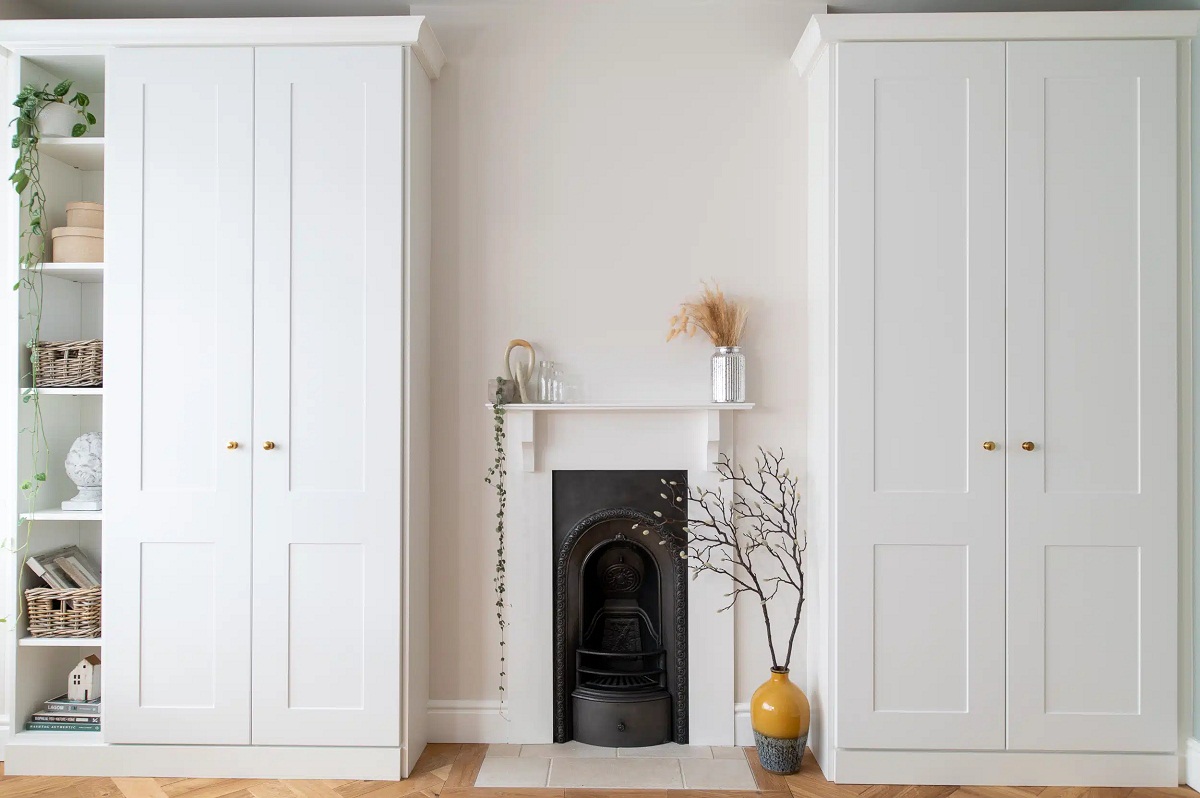
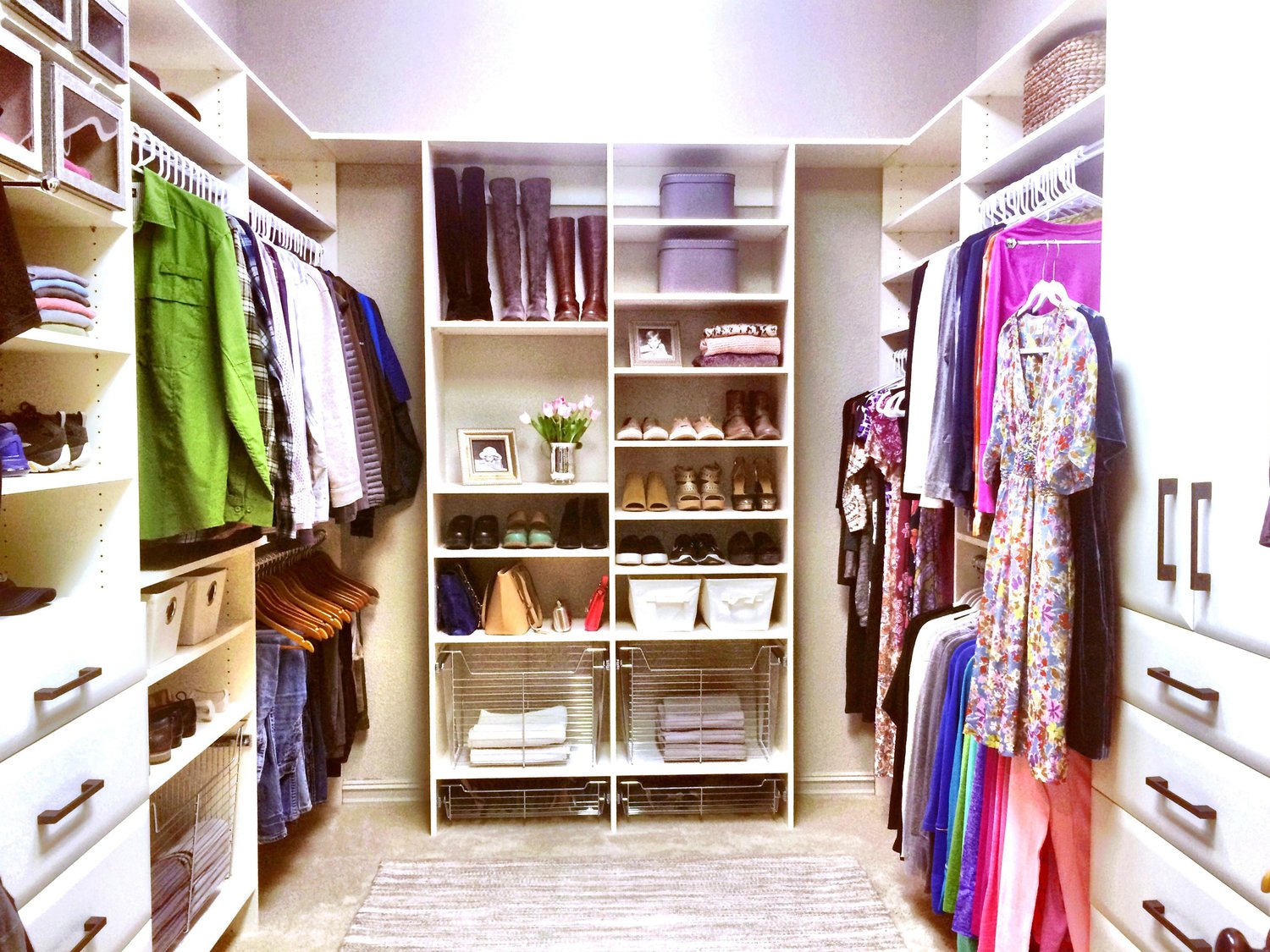

0 thoughts on “How To Build A Wardrobe For Men”